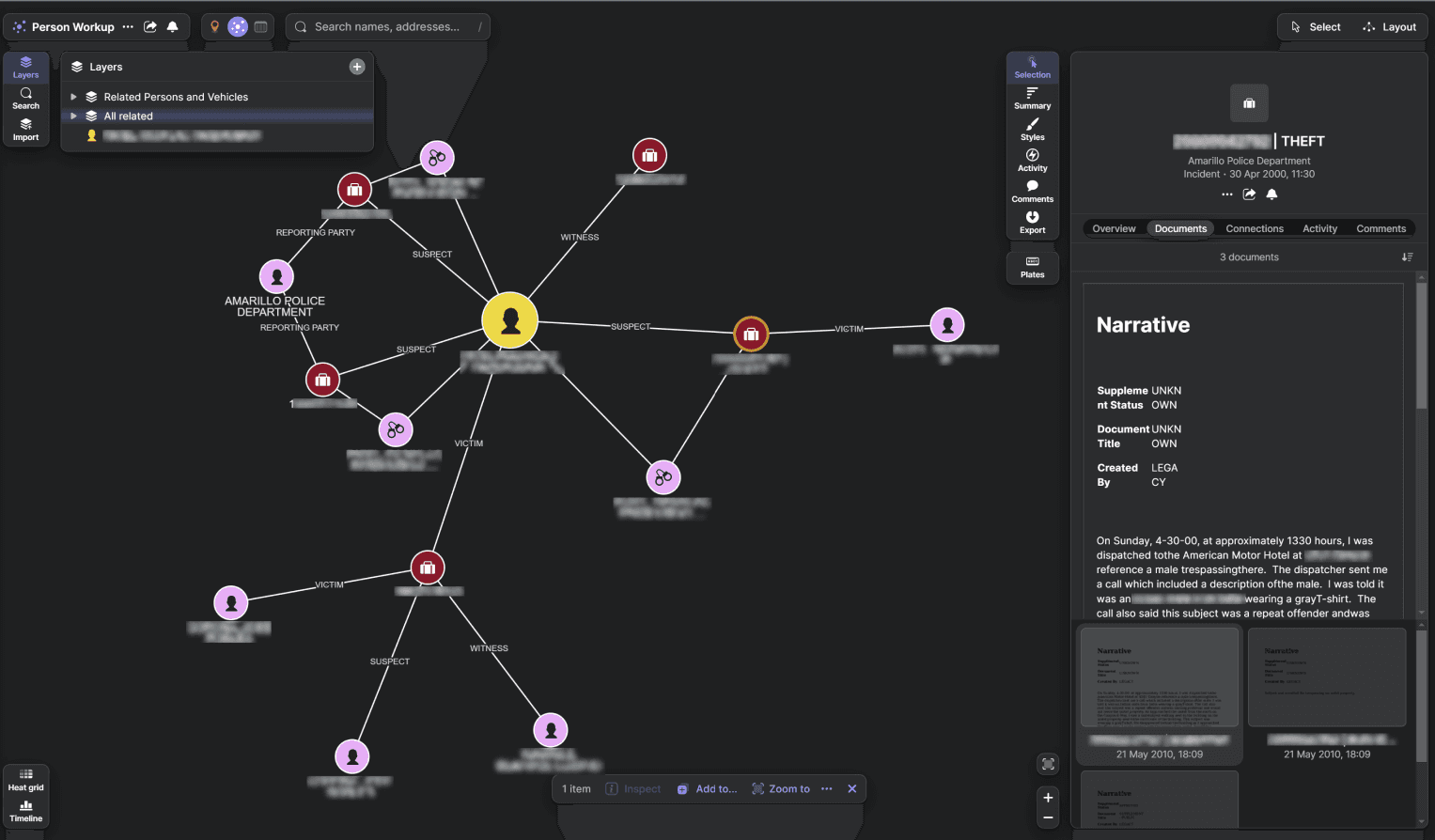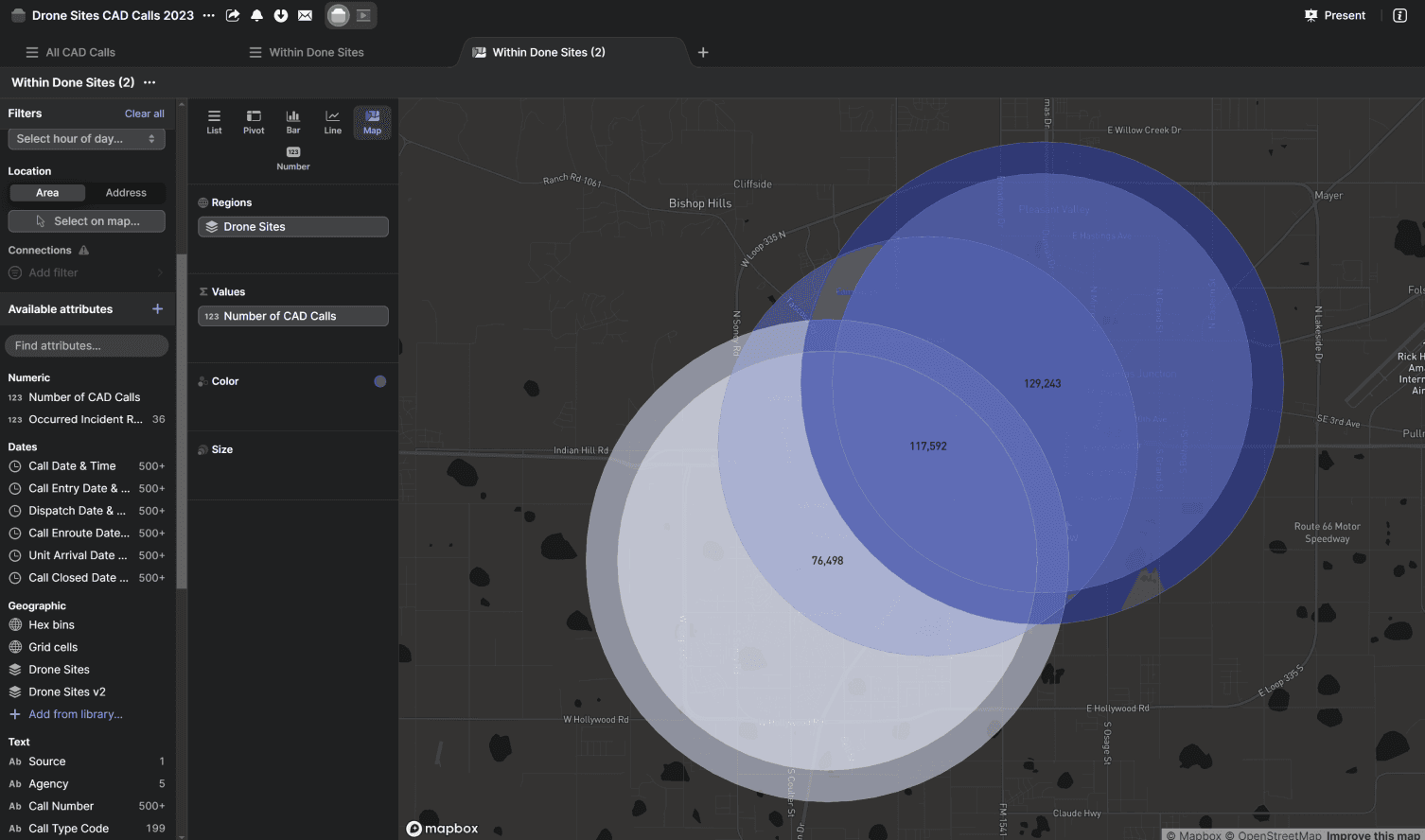Seconds save lives: The Amarillo Police Department’s real-time revolution
Peregrine Staff
May 31, 2024
“Real-time crime fighting is changing – simply reacting isn’t enough. We are building multiple layers of technology that can mitigate emergent crime until our officers can respond, and we want to equip them with the information they need to respond fast and stay safe.”
Lt. Shane Chadwick
Amarillo PD, Texas
Real-time crime center (RTCC) response coordination is measured in seconds.
“I’ve been to a lot of real time crime centers,” Lt. Shane Chadwick, Commander of the Amarillo Regional Crime Center told us. “Real-time crime fighting is changing – simply reacting isn’t enough. We are building multiple layers of technology that can mitigate emergent crime until our officers can respond, and we want to equip them with the information they need to respond fast and stay safe.”
RTCC personnel are used to wasting time flipping between program to program. Geospatial and video data from drones are in one system, citations in another, warrants in another, RMS and CAD in another, and evidence in another.
Commander Chadwick recognized the need for a common operating picture that responding officers, RTCC personnel, and law enforcement leadership could all leverage in parallel – in real time.
“I needed Peregrine because I wanted all my data in one spot so my searches would be quicker. Speed is critical,” he continued.
From hours to minutes
Peregrine successfully supports Amarillo PD’s mission-critical incident response by integrating and operationalizing data from more than 10 data sources, including Amarillo PD’s CAD and RMS systems, evidence and citations databases, geospatial information system, AVL, city- and state-run crash and utility databases, and more.
“Our analysts are awesome at solving crimes. They build a lot of dashboards that include crime trends, response times, geospatial analysis, you name it. Tasks that used to take hours are now completed in a fraction of the time,” Commander Chadwick said.
Within the RTCC, full person and location workups – understanding what cases, known associates, vehicles, incidents, and other data are associated with a person or a location – “took us hours,” said Haley Hernandez, a Crime Analyst Supervisor at the Amarillo Police Department. “That information is spread across different systems. It takes time to find, pull, and correlate disparate data.”
“With Peregrine, we do a one-time search. It’s easy. If you don’t know exactly what direction to take an investigation and you type key words into Peregrine, you’ll find out pretty quick if you’re on the right track.”

Peregrine automatically connects people, places, cases, vehicles, and more with its Network application
Chadwick and Hernandez also explained they combine data on 911 calls with potential drone locations; if there is an emergent issue with a drone nearby, they can use the aircraft as a quick, initial response before officers arrive on the scene. Chadwick explained that when there is an emergency, the goal is to have a drone on location within 90 seconds more than 90% of the time. “We hit the 90 second threshold about 98% of the time. Peregrine helped us figure out where to have our drone sites because we were able to filter calls for service relative to the locations of our drones.”
Peregrine also helps push context gathered by aerial video footage to officers in the field, keeping them safer and improving incident response. “That process went from about an hour to three minutes,” Hernandez said.

CAD calls overlaid with drone service areas
“We also use alerts and notifications through Peregrine. So, if there’s a CAD call with certain key words, we find out in real time. That means my team of analysts can respond to incidents and kickstart the investigative process more quickly.”
Identifying and curating information officers need, like full person and location workups along with drone mapping quickly, is only half the battle. The other half? Equipping officers in the field with that information.
Enhancing field decision-making
Patrol officers need information they can easily access and digest to make better decisions and respond effectively to whatever situation they face while keeping their communities safe. Peregrine’s mobile app is specifically optimized for information consumption in the field.
Chadwick agrees. “The ability to swiftly access reports from RTCC personnel and conduct location searches directly in the field has been a game-changer for our department,” he said. “My team in the field is great. Peregrine makes them better.”
Remember the alerts? They were critical when the Amarillo Police Department successfully apprehended three individuals, now in federal custody, involved in seven different aggravated robbery incidents.
Hernandez explains: “I had an alert set up for the word ‘robbery.’ One night around 10 pm, I get a notification a robbery occurred. So, I distribute the information, and our team found video with a suspect vehicle, which led to a lead suspect. We’d been working to apprehend this individual for two months or so, and we had a tip this individual had an associate who was with them during the robberies. The investigation continues, and we’re able to arrest the primary suspect and two co-conspirators.”
“Better information leads to safer communities,” said Hernandez. “We’ve been able to more effectively solve and disrupt violent crimes in our communities with Peregrine.”
Peregrine is built on AWS GovCloud.
